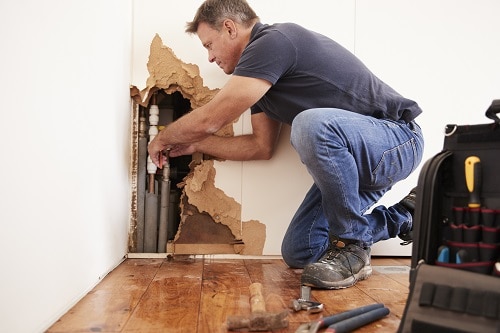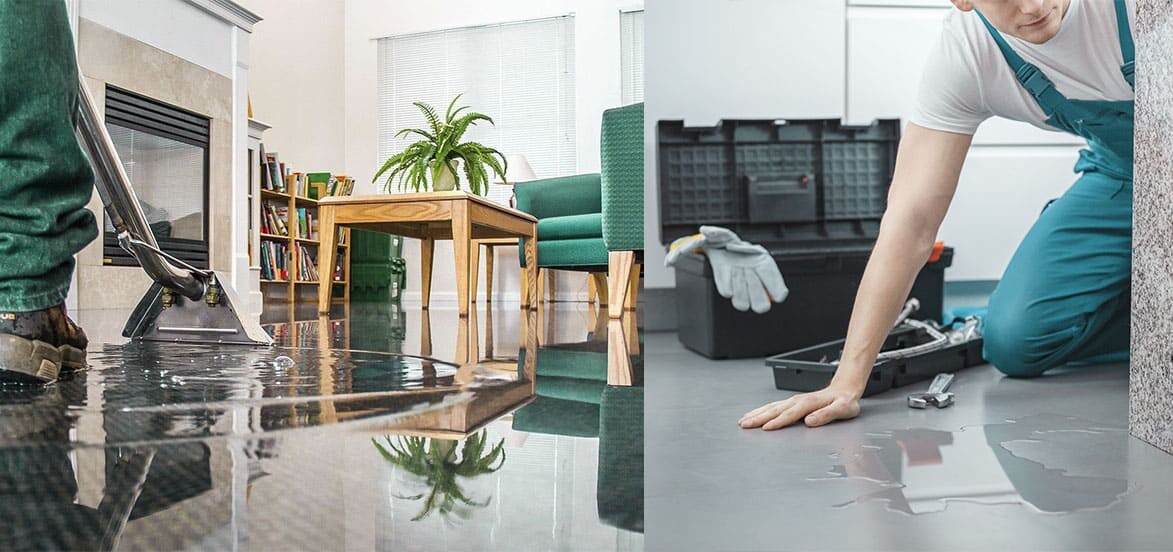Water Damage Restoration 101: Understanding the Process and Cost
Water damage can strike unexpectedly, leaving property owners in a state of confusion. Understanding the remediation process is essential for efficient recovery. From reviewing the damage to choosing the right solution copyright, each step affects the overall end result and expense. Elements such as the kind of water damage and seriousness also play a considerable duty. What are the particular techniques made use of in repair, and just how can one get ready for potential expenditures?
Kinds Of Water Damage

Initial Evaluation and Inspection

Water Removal Strategies
Adhering to the preliminary assessment, efficient water extraction methods are employed to minimize damage and stop further problems. These techniques include the use of specialized tools such as industrial-grade vacuum cleaners and submersible pumps - Mold Remediation After Water Damage. The option of approach depends on the volume of water present and the sort of products influenced. For standing water, completely submersible pumps are usually made use of for quick removal, while vacuums are suitable for drawing out water from carpetings and furniture. Additionally, advanced techniques like water extraction floor coverings might be utilized for hard-to-reach locations - Water Damage Restoration. The objective is to eliminate as much water as feasible, lessening the capacity for mold development and structural damage. Trigger and reliable water extraction is crucial in the total water damage repair procedure
Drying and Dehumidification Process
When the water removal is total, the drying and dehumidification process comes to be vital to restoring the affected area. This phase normally uses industrial-grade dehumidifiers and air moving companies to properly lower dampness degrees. The dehumidifiers reel in wet air, getting rid of excess moisture, while air moving companies circulate air to speed up evaporation. Monitoring devices is commonly used to track humidity and temperature degrees, ensuring ideal drying problems. The period of this process can vary relying on the level of the water damage and ecological elements. It is crucial to thoroughly dry all impacted materials, including walls, flooring, and furnishings, to stop mold and mildew development and architectural damage. Proper execution of this step is critical for an effective remediation outcome.
Cleansing and Sterilizing Affected Locations
Once the drying out process is total, an extensive initial assessment and examination of affected areas is vital to identify contamination degrees. Reliable cleansing techniques and appropriate products should then be used to get rid of debris and stains. Sanitization and sanitation methods are vital to ensure that damaging virus are eliminated, bring back the area to a secure condition.
Initial Analysis and Inspection
Before beginning any kind of repair efforts, an extensive initial evaluation and evaluation of the influenced locations are essential for reliable cleaning and sanitizing. This procedure entails identifying the extent of water damage, identifying the source of the water invasion, and reviewing the materials impacted. Examiners normally try to find indicators of mold and mildew development, structural integrity issues, and damaged possessions. The assessment also includes examining dampness degrees making use of customized devices to ensure no concealed water pockets stay, as these can lead to further issues. Recording the searchings for is important for preparing the next steps in the repair procedure. A detailed initial evaluation allows restoration experts to devise a targeted approach for efficient cleansing and disinfecting, inevitably minimizing damage and wellness dangers.
Cleaning Up Methods and Products
Effective cleansing and disinfecting of water-damaged locations call for a selection of techniques and items tailored to the particular products impacted. For porous surface areas like drywall and carpets, extraction approaches are important to eliminate excess moisture, followed by deep cleaning with specialized cleaning agents. Non-porous products such as floor tile or metal can be cleansed using commercial-grade cleansers that efficiently get rid of pollutants. Heavy steam cleaning is another reliable method, especially for carpets and upholstery, as it uses heats to eliminate germs and mold (Flood Cleanup Services). Additionally, green products are significantly prominent for their safety and security and efficacy - Water Damage Restoration. Ultimately, picking the ideal cleaning techniques and products not just guarantees immediate sanitation yet additionally help in stopping additional damage and health and wellness risks related to water breach
Sanitization and Disinfection Methods
When resolving water damage, appropriate sanitization and sanitation techniques are important to guarantee the security and health and wellness of the afflicted atmosphere. After initial cleansing, surfaces need to be treated with suitable anti-bacterials to get rid of virus, mold and mildew, and germs that thrive in wet problems. Typical approaches include the use of EPA-approved chemical anti-bacterials, which can be applied with spraying or wiping strategies. Furthermore, ultraviolet (UV) light systems can effectively sterilize locations by counteracting microorganisms without harsh chemicals. The selection of method commonly relies on the kind of products influenced and the level of contamination. Inevitably, complete sanitization not just restores a safe living space but also helps stop future wellness threats connected with remaining dampness and mold and mildew development.

Repair Work and Restoration Options
Reviewing the damage brought on by water direct exposure is essential for establishing the ideal fixings and reconstruction alternatives. Homeowners might encounter numerous concerns, consisting of harmed drywall, deformed floor covering, and compromised architectural aspects. Depending on the extent of the damage, fixings might include replacing sections of drywall, setting up get more info new flooring, or reinforcing structural light beams. In instances of severe damage, complete replacement of afflicted products may be needed. Furthermore, expert restorers frequently advise making use of dampness meters to analyze concealed wetness degrees before picking the finest strategy. It is necessary to act promptly to avoid mold and mildew development and additional wear and tear. Choosing the ideal choices not only recovers the home yet additionally guarantees long-term safety and security and performance.
Elements Affecting Restoration Expenses

The level of water damage directly affects the reconstruction costs property owners can expect to sustain. Variables such as the resource of the water, the duration of direct exposure, and the affected materials substantially influence pricing. Tidy water damage from a busted pipeline is usually much less costly to restore compared to damage caused by sewage. Additionally, the level of contamination determines the demand for specialized cleaning and disposal services, even more boosting expenditures. Geographical area also plays a role, as regional labor rates and availability of reconstruction solutions can vary. The necessity of the feedback influences prices; quicker treatments commonly lead to decrease total costs by protecting against more damage. Understanding these variables is essential for home owners when approximating repair costs.
The three key kinds of water damage are classified based on contamination degrees: clean water, grey water, and black water. An extensive initial analysis and examination are important steps in the water damage reconstruction process. For standing water, submersible pumps are normally used for rapid removal, while vacuum cleaners are perfect for extracting water from rugs and upholstery. The level of water damage straight impacts the restoration sets you back homeowners can anticipate to sustain. Tidy water damage from a broken pipeline is usually less expensive to restore contrasted to damage created by sewage.